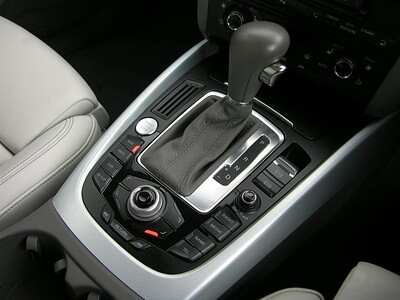13 Interior Car Part Names and Functions Explained
Interior car part names include; steering wheel, speedometer, odometer, fuel level-gauge, coolant-temperature gauge, tachometer, indicators, clutch, brake, accelerator, starter pedal, air vent, and gear shift.
Others that can also be listed within this category are; overhead rearview mirror, seats and door handles.
This article discusses interior car part names and functions, as follows;
1). Steering Wheel (in explanation of Interior Car Part Names and Functions)
The steering wheel of a car is called the wheel, hand-wheel or driving-wheel, because it is a circular component whose main function is to control the direction of the vehicle.
Steering wheels may be installed on the left or right side of a car, depending on the transportation guidelines and policies of a given geographic area. For example, it is mandatory for the wheel to be on the right side of the vehicle in some European countries like England, in line with their transport regulations.
On the other hand, the same method has been banned in some African countries like Rwanda [2].
Types of steering wheels in cars include; hydraulic power steering (HPS), and electric power steering (EPS); which can be further specified into full-electric and electric power-hydraulic steering (EPHS).
It is important to note that the types of steering wheels in cars is different from the types of steering gear systems in cars, which include; rack-and-pinion, tilt-able, quick-release, and recirculating-ball steering systems.

Interior Car Part Names and Functions: Steering Wheel (Credit: Tuner tom 2012 .CC BY-SA 3.0.)
2). Dashboard
The dashboard of a car is a horizontal component installed in front of the driver's seat, which is equipped with control and monitoring terminals for most of the functions of the vehicle.
It is called a dashboard based on the name given to a similarly-placed component in horse-drawn carriages in the nineteenth century, which was in fact a wooden barrier for protecting the carriage's occupants from debris being dashed toward the carriage by the hooves of the horses.
Features and parts of a car dashboard are; the tachometer, speedometer, odometer, fuel level-gauge, coolant temperature gauge, and indicators.
The tachometer indicates the rate of engine rotation of the vehicle; speedometer indicates speed in kilometers and miles per hour; and the odometer shows the total lifetime-travel distance, or current travel distance of the car.
Signals, symbols and lights in a car dashboard include engine-function indicator, gearshift position indicator, seatbelt and brake-warming indicators.
3). Pedals (in explanation of Interior Car Part Names and Functions)
Pedals in a car refers to a number of movable, foot-controlled components below the driver's seat and underneath the dashboard.
A car may have 2 or 3 pedals, depending on its primary mode of operation; where automatic vehicles may have two (accelerator, brake) and manual vehicles may have three (accelerator, brake, clutch) pedals [1].
Some cars may have four (4) pedals that include starter, accelerator, brake and clutch pedals.
Each pedal in a car, as arranged from left to right, can be described briefly as follows;
1. Clutch Pedal; used to connect the wheel transmission to the engine
2. Brake Pedal; used to reduce the velocity of the car (aa in service brake) or to secure the car in its stationary position (as in parking brake)
3. Accelerator Pedal; which is used to increase the velocity of the car.

Interior Car Part Names: Pedals (Credit: Tckma 2007)
4). Air Vent
A car air vent is a component of the Heating, Ventilation and Air-Conditioning (HVAC) system of the car, whose function is to transfer air between the HVAC and the car interior.
Cars have air vents because of the need to prevent stuffiness, over-heating, and air pollution in the vehicle.
AC vents in cars work as part of the HVAC system, which draws warm air from within and outside the vehicle unto a refrigerant-equipped evaporator and circulates the cooled air from the evaporator in the car's cabin, through the vents.
5). Gear Shift (in explanation of Interior Car Part Names and Functions)
Gear shift in cars is often used to refer to two components; which are the gear stick and its scale.
The term 'gear shift' may also be used to describe the various functions on the gear scale, or the act of moving (that is; shifting') the gear stick across the scale. The scale itself comprises of letters and numbers that may be referred to as gear shifts.
Gear shifts in a car include; R (Reverse), P (Parking), N (Neutral), D (Drive), L (Low Gear), M (Manual Mode), O (Overdrive), and S (Sport Mode).
S and L in car gear system stand for sport and low gear respectively, and represent two variants of low transmission; where sport refers to long-duration low gear mode that allows for maneuvering, while low-gear refers to a more instantaneous low transmission that is ideal for navigating steep terrains.
The drive (D) gear shift comprises of D1, D2, and D3.
D1, D2, and D3 represent First, Second, and Third gears respectively; which are indicative of various speed limits for the car, so that they activate 30, 50 and 70 km/h limits of velocity in some cars.

Interior Car Part Names and Functions: Gear Shift (Credit: The Car Spy 2010 .CC BY 2.0.)
Conclusion
Interior car part names are;
1. Steering Wheel
2. Speedometer
3. Odometer
4. Fuel Level-Gauge
5. Coolant-Temperature Gauge
6. Tachometer
7. Indicators
8. Clutch
9. Brake
10. Accelerator
11. Starter Pedal
12. Air Vent
13. Gear Shift
References
1). Bagameri, N.; Varga, B.; Csato, A.; Moldovanu, D. (2018). "Comparative analysis of automatic transmission and manual transmission behaviour on the worldwide harmonized light duty test cycle." 2018MATEC Web of Conferences 184(12):01020. Available at: https://doi.org/10.1051/matecconf/201818401020. (Accessed 2 March 2023).
2). Bari, M. (2014). "The study of the possibility of switching driving side in Rwanda." European Transport Research Review 6(4). Available at: https://doi.org/10.1007/s12544-014-0144-2. (Accessed 2 March 2023).

